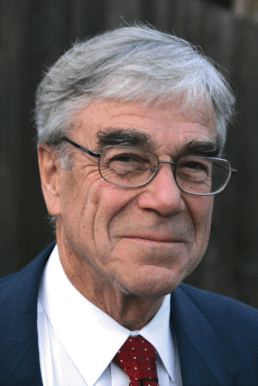Robin Clark (chemist) facts for kids
Quick facts for kids
Robin Clark
|
|
|---|---|
 |
|
| Born |
Robin Jon Hawes Clark
16 February 1935 Rangiora, New Zealand
|
| Died | 16 December 2018 (aged 83) London, England
|
| Alma mater |
|
| Known for | Transition metal and mixed-valence complexes |
| Awards | Bakerian Medal (2008) CNZM (2004) FRS (1990) |
| Scientific career | |
| Fields | Inorganic chemistry |
| Institutions | University College London |
| Thesis | Some Studies in the Chemistry of Titanium Complexes (1961) |
| Doctoral advisors | |
| Other academic advisors | William Fyfe |
| Doctoral students | Richard J. Puddephatt |
Robin Jon Hawes Clark (16 February 1935 – 6 December 2018) was a famous chemist from New Zealand. He was known for studying special types of metal compounds. Later in his career, he became well-known for using a cool technique called Raman spectroscopy. This method uses light to figure out what chemicals are in the colors (pigments) used in old paintings and artworks.
Contents
Early Life and School Days
Robin Clark was born in Rangiora, New Zealand, on 16 February 1935. He went to school at Marlborough College, Blenheim and Christ's College, Christchurch. After that, he studied at Canterbury University College to earn his bachelor's and master's degrees.
In 1958, he worked at the University of Otago. From 1958 to 1961, he studied for his PhD degree at University College London. He earned his PhD in 1961 for his work on titanium compounds. Later, in 1969, he earned another special degree called a Doctor of Science (DSc) from the University of London.
His Work as a Scientist
Clark started teaching at University College London in 1962. He became a very important professor there in 1989. He even led the science department and later the chemistry department. He retired in 2009.
Robin Clark passed away in London on 6 December 2018.
Solving Art Mysteries with Science
In 1992, Robin Clark was asked to help solve a big problem: how to tell if a painting was real or a fake. He needed a way to study the painting's chemicals without damaging it.
He developed a special way to use Raman spectroscopy for this. This method became a super important tool for:
- Figuring out if artworks are real.
- Helping to take care of old paintings.
- Making sure artworks last a long time.
Awards and Special Recognitions
Robin Clark received many awards and honors during his career.
- In 1969, he became a fellow of the Royal Society of Chemistry.
- In 1989, he was made an honorary fellow of the Royal Society of New Zealand.
- He became a fellow of the Royal Society of London in 1990.
- In 2004, he was given a special honor called a Companion of the New Zealand Order of Merit. This was for his great work in science and for helping New Zealand's interests in the United Kingdom.
- In 2009, he won the Sir George Stokes Award. This award recognized his amazing work using science to study art and old objects, especially with his Raman microscopy technique.

